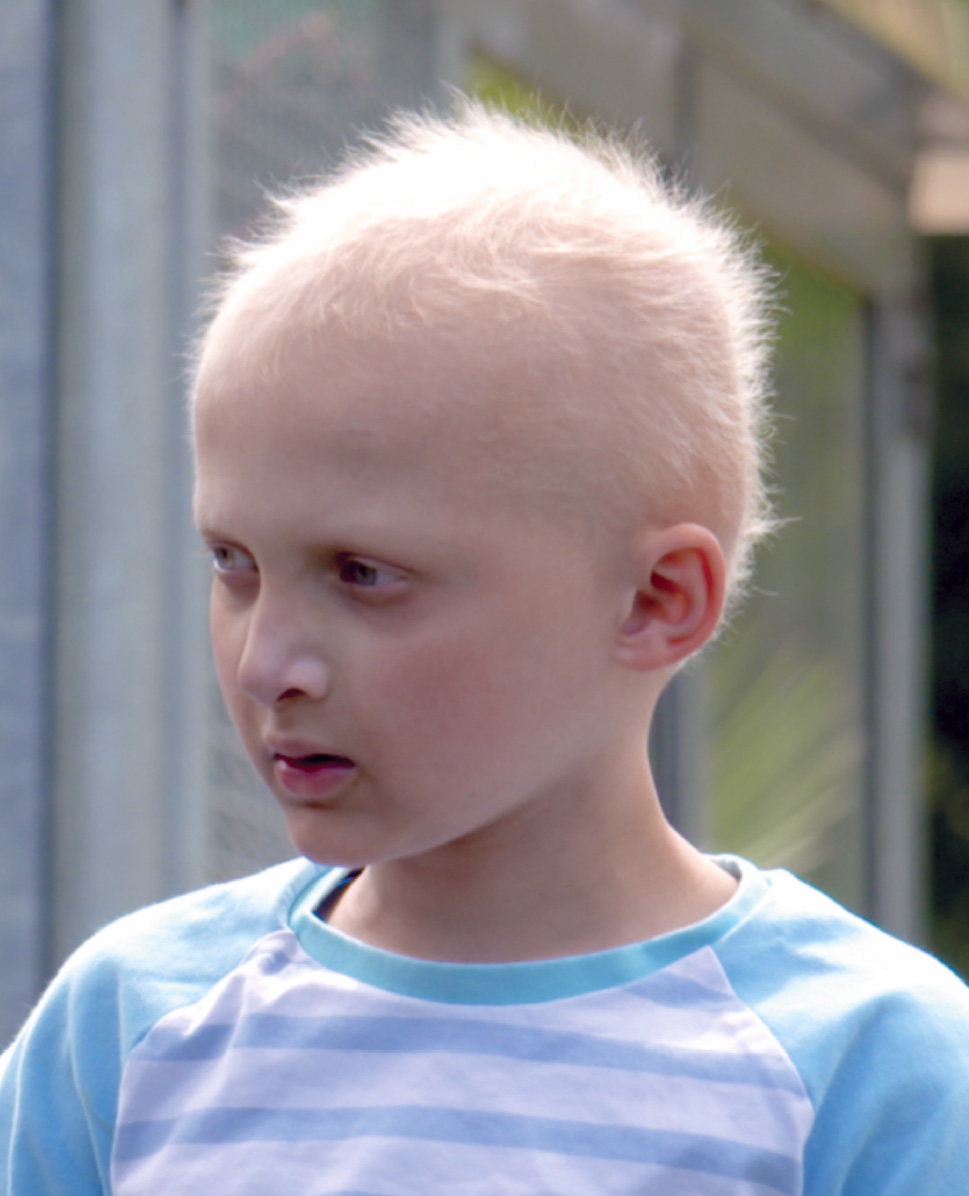Know your
Ectodermal Dysplasia (ED)
Ectodermal dysplasias are a group of serious, rare genetic conditions that affect the skin, sweat glands, teeth, hair and nails. They are caused by a gene mutation which leads to a missing or non-functioning copy of the protein needed for these tissues to grow and work properly. While some supportive care is possible to help manage the burden of symptoms, there are no curative treatments available.

Did You Know?
Ectodermal dysplasia starts to develop before a person is born
- Hypohidrotic Ectodermal Dysplasia (HED) is the most common ectodermal dysplasia. The main symptoms are missing or reduced ability to sweat, leading to a risk of dangerous overheating, as well as few or no teeth and sparse hair.
- X-linked hypohidrotic ectodermal dysplasia (XLHED) is the most common HED. It is named for the way the condition is passed from parents to their children.
Did You Know?
Almost 25% of people with HED are hospitalized due to fevers
- In young children with HED, lack of sweat glands may lead to overheating and can result in life-threatening complications, such as seizures, or brain damage.
- Dental abnormalities are common, often causing chewing or swallowing issues and requiring extensive oral surgeries and dental implants. Other symptoms including frequent respiratory infections, allergic asthma, and eczema can also occur.
- As an adult, HED symptoms can be severely debilitating and require life-long management and lifestyle modification. This can include limiting physical activities that can cause dizziness or fainting, especially during periods of hot weather or sun exposure.
The Power of Knowing
XLHED-affected mothers and patient advocates discuss experiences with XLHED symptoms and the importance of getting a genetic diagnosis.
Did You Know?
Every parent affected by XLHED has a 50% chance of passing the mutation to their children
Both men and women can pass XLHED to their future children. The cause of XLHED is a mutation on the X chromosome. This leads to a faulty protein called EDA, which is essential during a child’s fetal development for the normal formation of sweat glands, skin, teeth, nails and many other glands in the eyes and respiratory system.
- Boys and men with XLHED typically have more severe symptoms than girls and women.
- This is because boys and men have only one X chromosome – when it is mutated, they fully have the condition. Girls and women have two X chromosomes, so when they carry the mutation they also have a working copy which can make a full EDA protein.
- Women affected by XLHED may or may not show symptoms, but if they pass on the mutation their sons will be fully affected. Daughters inheriting the mutation will be carriers because of the second copy still functioning.
XLHED Inheritance (X-linked)

X, Y = unaffected genes
If you have a father or other male relative with ED symptoms, XLHED could run in your family
If you have the XLHED mutation, 50% chance your children will too
Because of X-linked genetics, boys inheriting XLHED from their mother are most likely to be fully affected

CONSIDER GENETIC TESTING FOR YOUR ED
Learning about the genetic cause of ED can help you better understand disease complications, learn about supportive treatment options, plan ahead for symptoms in your children and consider current research opportunities.
If you suspect a form of ED may run in your family, consider contacting the nearest patient advocacy group about genetic testing.
References:
1. Schneider, H.; Schweikl, C.; Faschingbauer, F.; Hadj-Rabia, S.; Schneider, P. A Causal Treatment for X-Linked Hypohidrotic Ectodermal Dysplasia: Long-Term Results of Short-Term Perinatal Ectodysplasin A1 Replacement. Int. J. Mol. Sci. 2023, 24,7155 2. Körber, I, Klein, OD, Morhart, P, et al. Safety and immunogenicity of Fc-EDA, a recombinant ectodysplasin A1 replacement protein, in human subjects. Br J Clin Pharmacol. 2020; 86: 2063– 2069 3. Fete M, Hermann J, Behrens J, Huttner KM. 2014. X-linked hypohidrotic ectodermal dysplasia (XLHED): Clinical and diagnostic insights from an international patient registry. Am J Med Genet Part A 164A:2437–2442 4. Deshmukh S, Prashanth S. Ectodermal dysplasia: a genetic review. Int J Clin Pediatr Dent. 2012 Sep;5(3):197-202 5. Leo, B., Schneider, H. and Hammersen, J. (2022), Reproductive decision-making by women with X-linked hypohidrotic ectodermal dysplasia. J Eur Acad Dermatol Venereol, 36: 1863-1870. Additional information from data on file.
